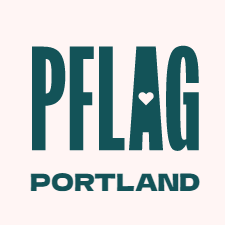Here’s some basic information to get you started.
What does LGBTQ mean?
It is a acronym for Lesbian, Gay, Bisexual, Transgender, Queer. These terms describe certain aspects of sexual orientation and gender identity. LGBTQ is often used as an umbrella term for anyone who is “not straight”, but it can confuse by its lumping together of these very different aspects. Here’s a better way to think about LGBTQ:
Sexual orientation is simply who you are primarily attracted to; whether you’re Straight, Gay, Lesbian, or Bisexual.
Gender identity actually has several dimensions, not the two states of “male” and “female” that we’ve been brought up to believe.
- Identity – how you see yourself: male, female, or somewhere in between.
- expression– how you act and dress.
- sex – to put it bluntly, your ” junk”. And not everybody is born with the usual plumbing.
- perception – how others see you. A lot of the problems LGBTQ people experience are ones of perception. How we present ourselves drives others’ reactions to us. If our presentation differs from the expected, things can happen.
Transgender people don’t identify with the gender that their physical sex would imply. They may identify as female, male, a combination of both, or neither – independent of their sexual orientation.
Parsing this continuum is a tricky task, and inherently limiting. Many younger LGBTQ people no longer bother, and prefer to simply describe themselves as Queer. Over time, this may come to be the preferred way for everyone to refer to LGBT folks, but for now it’s best to ask first.
PFLAG uses LGBTQ when talking about the “not straight” community as a whole, and specific terms when talking about particular individuals or groups.
Being LGBTQ is natural.
Sexual orientation and gender identity are innate traits. They are normal and natural human characteristics, and are just two of the many ways that people differ.
No one is sure why people are born LGBTQ, but it is most definitely not a “lifestyle” choice.
By current estimates 10% of the population is LGBTQ. Around the world, and throughout history. LGBTQ people come in all colors and faiths; from all cultures and walks of life.
LGBTQ people are part of the family.
Like everyone else, LGBTQ people have families and friends who love them, and whom they love and care for. Like every human being, LGBTQ people need their families’ unconditional love and acceptance, and those who receive it have a greater chance of living a healthy and fulfilling life. For those who do not, the consequences are often tragic – for themselves as well as their families.
Being LGBTQ is not a disorder and cannot be changed.
Both the American Psychiatric Association and the American Psychological Association have recognized that homosexuality is not a mental or emotional disorder. Therefore, it does not need to be “cured.” Psychiatrists and Psychologists have concluded similarly for transgender people.
So-called “ex-gay” (also called reparative or conversion) therapy hurts LGBTQ people and only drives them deeper into the closet. The leading medical associations are in full agreement that it does not change their innate orientation or identity and may even be harmful. Think about it. If you are straight, do you really think you could “learn” through therapy to be attracted to the same sex? If you know you are female, do you think you could learn to identify as male? Attempts to change sexual orientation or gender identity originate from cultural bias based on myth, misperception and misunderstanding. Our challenge is not to change LGBTQ people, but to change the cultural bias that denies their full humanity.
Diving In…
If you’re ready to learn more, pick a topic from the list at the top left of the page. There you’ll find information on specific topics as well as a glossary of terms.
